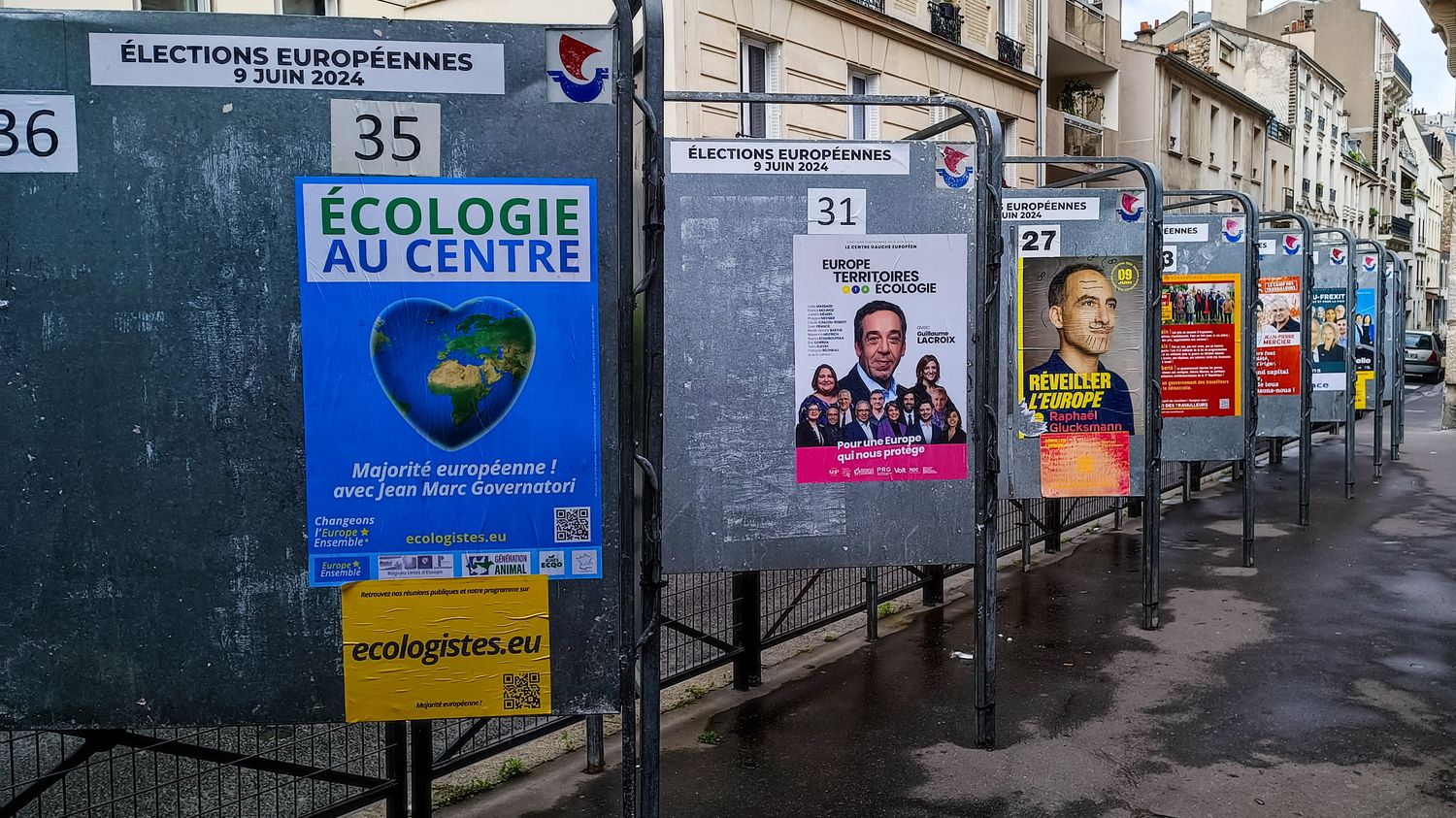Much more than for a presidential or municipal election, the political forces engaged in the European battle are banking on the territories and categories of voters who smiled upon them during previous elections.
The European elections are fast approaching and the specter of a strong abstention continues to hover over the ballot, while almost one in two voters (49.9%) did not go to the polls in 2019. To try to achieve the best possible score, Sunday June 9, the various lists involved must therefore once again convince the French to go to the polling stations.
“The challenge, in an election for which one in two French people vote, is to ensure the mobilization of their electoral core above all”explains Christelle Craplet, director of BVA Opinion. “The biggest risk is that our voters stay at home, not that voters are stolen from us”, confirms LFI deputy Matthias Tavel, campaign director of La France insoumise. The different camps therefore try as a priority to mobilize those who supported them during previous elections.
In this little game, each of the main political forces has its privileged areas. Head of the Renaissance list, “Valérie Hayer is from the west of France, but our electoral heart is the West”, insisted an influential member of the majority at the beginning of April. The MEP’s travels since the beginning of March reflect the desire to appeal to this electorate, with numerous visits made to the Pays de la Loire region and other regions in the western half, such as Nouvelle-Aquitaine or the Normandy.
Insoumise France favors other territories. “We go a lot overseas, where Jean-Luc Mélenchon has often exceeded 50%”, underlines Matthias Tavel. LFI also favors the popular neighborhoods of large cities, where it achieved good scores during the presidential elections of 2017 and 2022. During these last two weeks of the campaign, the movement decided to organize a “Manifestival” in five cities which rather successful in the past: Paris, Lille, Rennes, Montpellier and Marseille. The Rennes event was, however, banned by the prefecture for fear of disturbances to public order, which Louis Boyard, the deputy who initiated the event, denounces.
“In large student towns, we know that we have a base of sympathy that we must put into motion.”
Matthias Tavel, campaign director of Manon Aubryat franceinfo
These choices are also found in the door-to-door and towing operations carried out by the different lists in the run-up to the vote. “We targeted the postal distribution of leaflets where we had the best scores, because voters have a good chance of becoming readers. Everyone does that”justifies a Renaissance framework.
To mobilize your potential electorate, it is not enough to target the right areas on the map of France. “There can be geographical reasoning among the parties, but also socio-demographic”, supports Christelle Craplet. The strategy is therefore to concentrate its efforts on categories of the population that are a priori favorable. For some, it will be young people or rural people, for others higher socio-professional categories or seniors, for example. This socio-demographic strategy can lead to targeting geographic sectors, such as certain cities or rural areas.
There are, however, two drawbacks to this priority targeting. The first risk is making a lot of effort to court an electorate who will not come on election day. “LFI is making a mistake by going after working-class neighborhoods and young people, it’s an electorate that will not vote”, provides a framework for the Macronist campaign. Young people, who are more numerous than the average to support LFI, according to an Ipsos survey for France Télévisions and Brut published Wednesday May 29, could in fact abstain at nearly 60%.
The presidential camp is also concerned by this danger. “Usually, the Macronists have an electorate that votes, with rather older people, traditionally pro-Europe. This year, that is not really the case”notes Christelle Craplet.
“The traditional voters of the Macronist camp do not seem too mobilized, at least less than those of the RN.”
Christelle Craplet, director of BVA Opinionat franceinfo
This difference in mobilization, measured by the multitude of opinion surveys which have been published in recent months, explains in particular the significant gap between the RN and Renaissance lists in the polls.
None of the heads of the list having the gift of ubiquity and the militants not forming an army capable of knocking on all the doors of France, it is sometimes necessary, in a campaign, to abandon certain areas of the territory. “We are not going to lose too much strength in places where we perform less well”, warned Renaissance MP Pieyre-Alexandre Anglade, campaign director of Valérie Hayer, to journalists at the end of March. The instructions were obviously integrated by the Macronist troops: “I’m not trying to convince people who are too far from us. I can’t convince Jordan Bardella’s supporters, but rather pro-European people”confides a Renaissance minister. “We are not going to end the campaign in Nice”quips Matthias Tavel from LFI.
It is precisely in Nice that Marion Maréchal will end her campaign for Reconquest, Thursday June 6. The objective, for the candidate, is to cross the 5% mark and send elected officials to the European Parliament. In 2019, with 22.6 million ballots cast, approximately 1.13 million votes were needed to achieve this. A few days before the ballot box verdict, refueling in areas of strength is therefore an absolute necessity. In a city and a department of the Alpes-Maritimes which voted 14% for Eric Zemmour in the first round of the 2022 presidential election, with 78,000 votes, Marine Le Pen’s niece understood this well.
